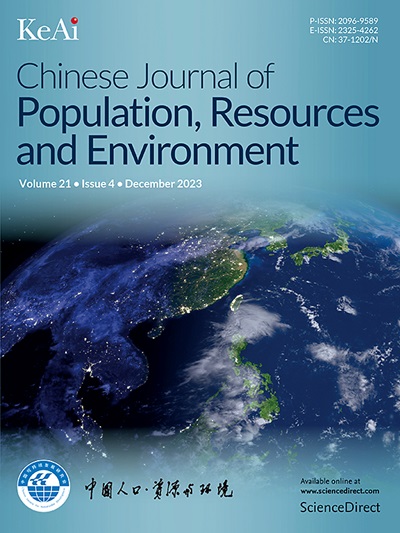Analysis of hotspots of urban eco-environmental problems: A case study of Shenzhen City
IF 4.8
4区 环境科学与生态学
Q2 ENVIRONMENTAL STUDIES
Chinese Journal of Population Resources and Environment
Pub Date : 2025-03-01
DOI:10.1016/j.cjpre.2025.01.011
引用次数: 0
Abstract
Urban eco-environmental management is a key focus in the modernization of national governance systems and governance capacity. Advanced information technology should be used to identify ecological problems in urban areas accurately while enhancing the environmental management capacity to promote the sustainable development of cities. This study centers on statistical data from PM2.5 air monitoring stations in Shenzhen, China, and supplemental data, such as population distribution data from China Unicom’s mobile phone signaling. Data cleaning and fusion are used to construct a spatial dataset of an eco-environmental problem: PM2.5 concentrations. The geostatistical analysis tool ArcGIS is used to identify the most suitable interpolation method for reflecting this eco-environmental problem based on multiple parameter adjustments and repeated testing. A hotspot distribution map of PM2.5 concentrations is generated, and correlation analysis is conducted on the population density and distribution patterns in these hotspot areas. This enables the quantitative analysis and exploration of the spatial characteristics and coupling relationships of PM2.5 concentrations. The results show a positive correlation between the PM2.5 concentration distribution and the points of interest, road network density, number of dead-end roads, and average building height in Shenzhen. No correlation is found between population and building densities and the PM2.5 concentration distribution, possibly due to the city’s effective environmental management and pollution control measures. These findings help advance the development of precise, scientific, legally compliant pollution control strategies and decision-making processes. Furthermore, they provide technical support for urban eco-environmental planning, management, and sustainable development.
城市生态环境问题热点分析——以深圳市为例
城市生态环境治理是国家治理体系和治理能力现代化的重点。利用先进的信息技术,在准确识别城市生态问题的同时,提高环境管理能力,促进城市的可持续发展。本研究以中国深圳PM2.5空气监测站的统计数据为中心,并辅以中国联通手机信令的人口分布数据。数据清洗和融合用于构建一个生态环境问题的空间数据集:PM2.5浓度。利用地质统计分析工具ArcGIS,通过多次参数调整和反复试验,确定最适合反映该生态环境问题的插值方法。生成PM2.5浓度热点分布图,并对这些热点区域的人口密度和分布格局进行相关性分析。这可以定量分析和探索PM2.5浓度的空间特征和耦合关系。结果表明,PM2.5浓度分布与兴趣点、路网密度、死路数和平均建筑高度呈正相关。人口和建筑密度与PM2.5浓度分布之间没有相关性,可能是由于城市有效的环境管理和污染控制措施。这些发现有助于推动制定精确、科学、合法的污染控制战略和决策过程。为城市生态环境规划、管理和可持续发展提供技术支持。
本文章由计算机程序翻译,如有差异,请以英文原文为准。
求助全文
约1分钟内获得全文
求助全文
来源期刊

Chinese Journal of Population Resources and Environment
ENVIRONMENTAL STUDIES-
CiteScore
4.30
自引率
1.10%
发文量
791
审稿时长
79 days
期刊介绍:
The Chinese Journal of Population, Resources and Environment (CJPRE) is a peer-reviewed international academic journal that publishes original research in the fields of economic, population, resource, and environment studies as they relate to sustainable development. The journal aims to address and evaluate theoretical frameworks, capability building initiatives, strategic goals, ethical values, empirical research, methodologies, and techniques in the field. CJPRE began publication in 1992 and is sponsored by the Chinese Society for Sustainable Development (CSSD), the Research Center for Sustainable Development of Shandong Province, the Administrative Center for China's Agenda 21 (ACCA21), and Shandong Normal University. The Chinese title of the journal was inscribed by the former Chinese leader, Mr. Deng Xiaoping. Initially focused on China's advances in sustainable development, CJPRE now also highlights global developments from both developed and developing countries.
 求助内容:
求助内容: 应助结果提醒方式:
应助结果提醒方式:


